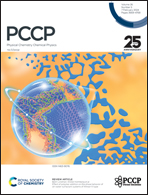Charge transporting and thermally activated delayed fluorescence materials for OLED applications
Abstract
The design and synthesis of effective charge transporting (CT) and thermally activated delayed fluorescence (TADF) materials are in high demand to obtain high-performing OLED devices. Recently, the significant development in the field of OLEDs has led to the creation of numerous charge transporting and TADF materials with diverse structures. To further improve the device performance, a better understanding of the structural characteristics and structure–property relationships of these materials is essential. Moreover, to enhance the efficiency of OLEDs, all the electrogenerated excitons should be constrained in EMLs. The TADF mechanism can theoretically register 100% IQE through a potent up-conversion method from non-radiative triplet excitons to radiative singlet excitons. In this review, the structural importance, classification, physical properties, and electroluminescence data of some recent charge transporting and TADF materials are summarized and discussed. Moreover, their molecular structural dependence on functional groups and linkers is classified, which can enhance their charge transporting or emitting ability. To offer a potential roadmap for the further development of charge transporting and TADF materials, it is hoped that this study will encourage researchers to acknowledge their important role in OLEDs.

- This article is part of the themed collection: 2024 PCCP Reviews


 Please wait while we load your content...
Please wait while we load your content...